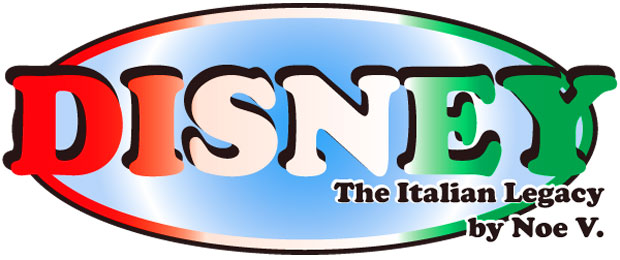


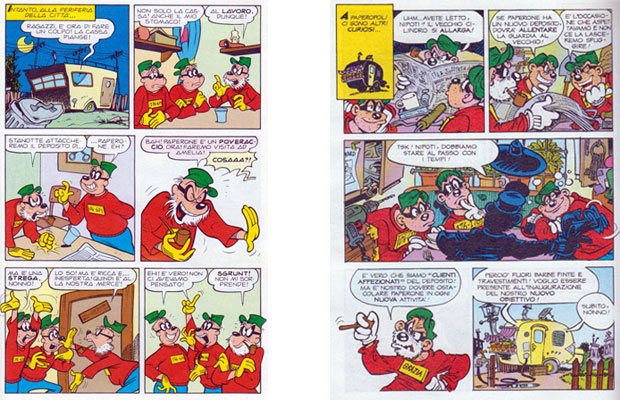





A blog about my interests, mainly the history of fighting games. I also talk about animation, comic books, car culture, and art. Co-host of the Pink Monorail Podcast. Contributor to MiceChat, and Jim Hill Media. Former blogger on the old 1UP community site, and Capcom-Unity as well.









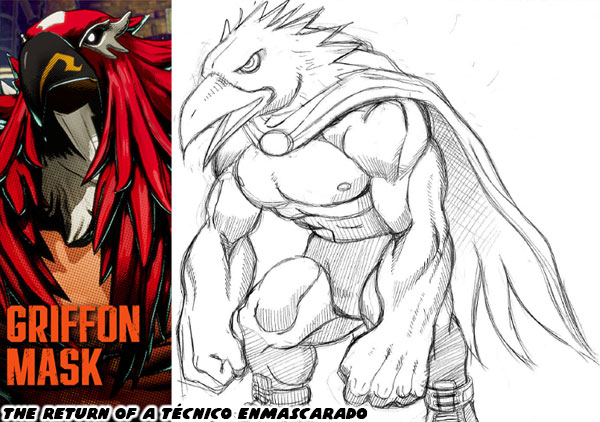









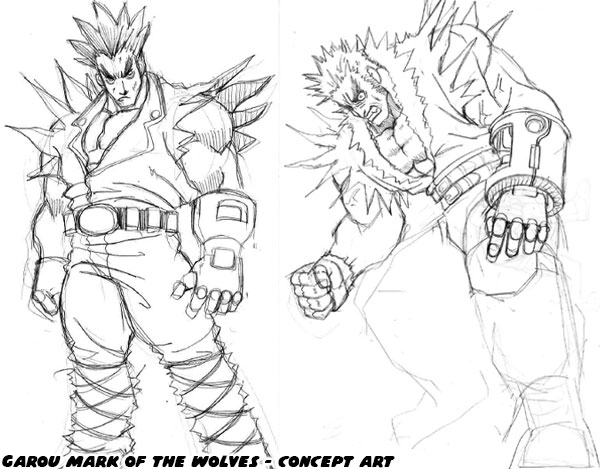




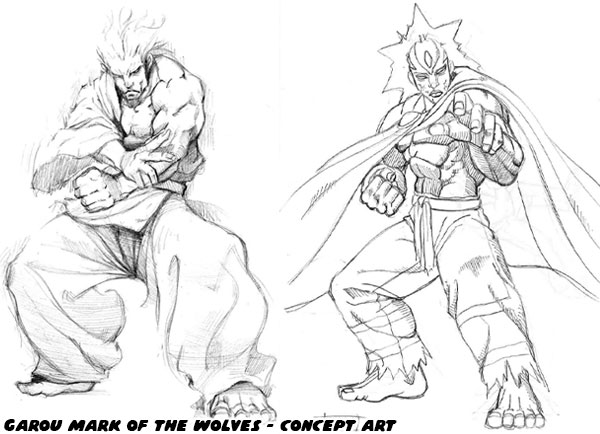



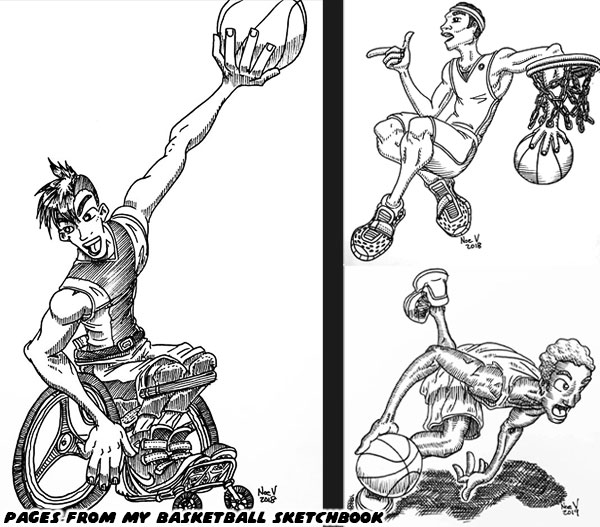

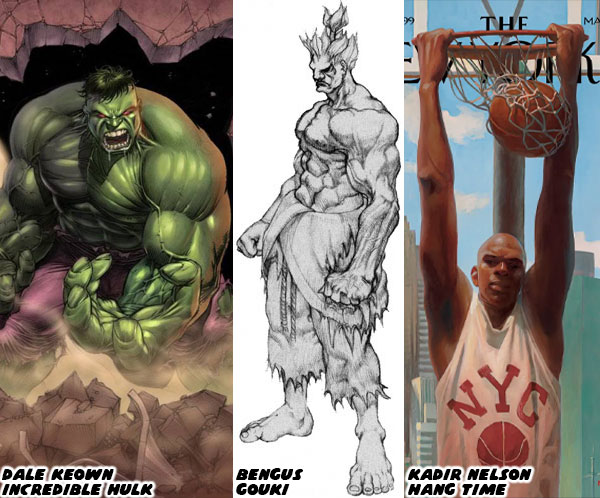







In the previous blogs I had mentioned how some issues of Topolino came with gadgets, or toys for subscribers. Subscribers had to assemble the larger toys. The scale and attention to detail in some of the gadgets were amazing For example a catamaran for Paperino was about 8-inches long, actually floated and had a tiny electric motor to propel it forward. It had sails, a tiny canvas net and figure of Paperino could be removed. The on / off switch for the motor was activated by the steering wheel of the ship.

Topolino gadgets included firetrucks, snowmobiles, space ships, motorcycles, castles, dragons, pirate ships and even buildings. Each set was finely produced and was layered with detail and hidden surprises. Even the car gadgets were anything but typical.
The Phantom Blot was the major villain for Mickey Mouse in both US and Italian comics. He often was seen driving around in a mysterious black convertible with a dark blot over the license plate. The car (the Blackmobile or Blotmobile depending on the writer) that could be assembled with the issues of Topolino was a work of art.

The top of the car could be removed as well as the Phantom Blot figure that came with it. The gear shifter on the car triggered wings on the underside of the car to pop out. A button behind each tail fin of the car shot out red plastic taillight missiles. A button behind the driver dropped plastic oil slick cutouts from the trunk.
These gadgets were unavailable in toy stores, they could only be gotten through subscriptions to Topolino magazine. They helped build fans of the Disney name but also helped build a collectable market. One of the other publishers aware of this trend was De Agostini, also based in Italy. De Agostini held several publishing licenses in Italy, including those for Hokuto No Ken / Fist of the North Star and Dragon Ball. They released DVD sets and collectable plastic figures for many of their licenses.

For Disney fans De Agostini released the Disney Parade series. These were hard plastic figures based on characters featured in film and comic books. Figures that would be considered rare in the USA appeared in the lineup, such as a young Scrooge McDuck in his Klondike outfit, or Jose Carioca from Brazil.
The detail in each sculpt was amazing. The coloring and poses were spot on, as if the heroes and villains were taken right from the pages of the comics.

Look at how Magica DeSpell was ready to cast a hex on Scrooge or the flirty look from Brigitta MacBridge. Of course Scrooge seemed fixated on his true love. These figures were not available in stores or online. Collectors had to go to De Agostini kiosks in local malls to collect the figures, two of which were released every week over the course of several months. Imagine how patient fans were that collected a complete set of the 60 figures! Goofy or Pippo as he was known in Italy was given a werewolf alter-ego in the X Mickey comic series. De Agostini was catering the collection to Disney fans that were familiar with storylines featured within the pages of Topolino magazine and the offshoot publications. The white-furred Pipwolf was given the colors and proportions based on the comic but was still kept in scale with the icon that inspired him

The figures were about 4.5 inches on average and each one released was to scale with the rest of the series. Taller characters like Goofy or Mortimer Mouse were pushing 7 inches while shorter characters like Louie or Paperotto (young Donald) were just over 3 inches.

The Disney Parade figures were not all heroes however. Even villains like Rockerduck and the mad scientist Emil Eagle were presented in the set.
Legendary Disney animator Marc Davis would teach his students that a great character designs did not feature characters with blank stares, instead the artist would make it clear that they were living, thinking figures. In the case of the De Agostini sculpts audiences could clearly see that the characters were thinking. The frustration that Rockerduck held while he was chewing on his hat, or that Emil was in the middle of hatching a diabolical plan were apparent.
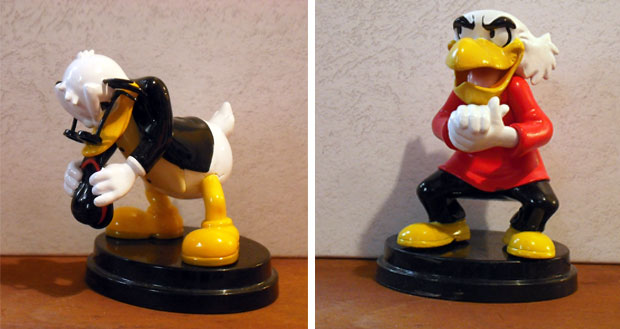
The female leads were not ignored in the collection either. Emily Quackfaster, the secretary for Scrooge and Daisy Duck also made for very interesting figures and poses.

Not many Disney fans in the US were familiar with Donald Duck’s neighbor Mr. Jones. Unless audiences had kept pace with the comics they would have missed out on some of Carl Barks most hilarious short stories. Donald and Neighbor Jones had been the worst of neighbors for almost 70 years, always trying to put the other person in their place. The two characters turned out to be evenly matched despite their size difference.
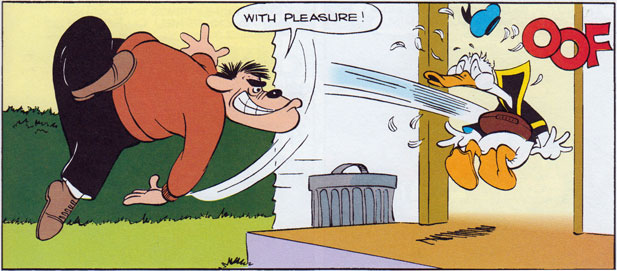
De Agostini allowed the long running feud to finally be recreated in 3D. The figure of Jones was practically daring Donald to take his best shot. Of course one of the Donald figures created by De Agostini was posed ready for a fight as well.

Even after Carl Barks retired the talented Don Rosa kept the two battling in comics. Don ensured that new generations of Disney comic fans would never forget the bitter rivalry. Neighbor Jones did not come up as often in the pages of Topolino but De Agostini knew that collectors throughout Europe would be happy to see and pick up the figure.

It seemed that almost every character that had appeared in a Disney animated short or on the comic book pages got the Disney Parade treatment. Moby Duck and Fethry Duck made for two very whimsical figures and fit very well with the rest of the collection.
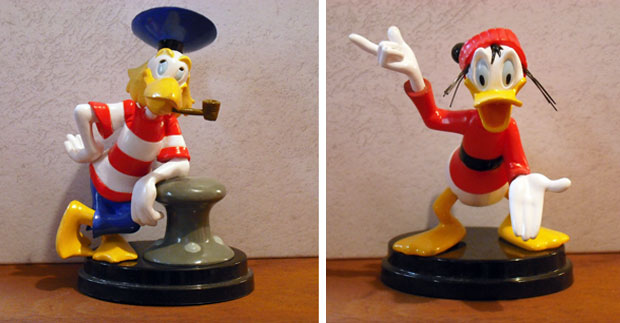
The Disney Parade set was so popular among collectors that De Agostini decided to follow up with a sort of deluxe edition of their figures. The newer ones would be in a larger scale, ceramic and painted with greater detail and fidelity.
The new edition of figures was dubbed the Disney Collection and the sizes now averaged around 6 inches. To distinguish them from the Disney Parade series the new figures were much heavier and placed on larger silver stands. These figures were also made with a smaller run, making them more collectable.

Not all of the characters featured in the Disney Parade made it into the Disney Collection. Those figures that did were given new poses and additional material. Some figures created for the Collection were not featured in the Parade series. The next blog will highlight my favorite figure and try to explain why these collectables were important to the community. As always if you would like to sponsor me please visit my Patreon page and consider donating each month, even as little as $1 would help make better blogs and even podcasts!